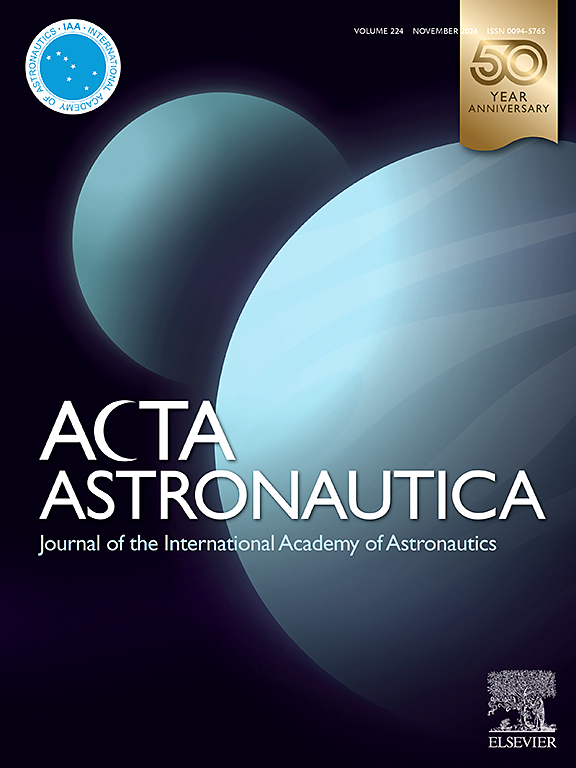Relative orbit transfer using constant-vector thrust acceleration
IF 3.1
2区 物理与天体物理
Q1 ENGINEERING, AEROSPACE
引用次数: 0
Abstract
This study proposes a rapid algorithm to achieve relative orbit transfer based on constant-vector thrust acceleration control, where the magnitude and direction of the thrust acceleration are constant in the tangential–normal–out-of-plane (TNH) frame. Based on the presented linearized thrust-control matrix, which is used to construct the first-order relationships between the relative position, velocity, and the constant-vector thrust acceleration, two analytical approximate solutions are presented for two types of relative orbit transfer problems: the one-vector thrust acceleration solution to the relative orbit transfer problem, which only requires the final relative position, and the double-vector thrust acceleration solution to the relative orbit transfer problem, which requires the final relative position and velocity. Furthermore, for the cases where the magnitude constraint of the thrust provided by the engine is required, fast-iterative algorithms are proposed to obtain the one-vector acceleration solution and the double-vector acceleration solution that satisfy the magnitude constraint strictly. The simulation results showed that the proposed methods are rapid, accurate, and easy to implement, demonstrating their wide application potential for engineering practice.
求助全文
约1分钟内获得全文
求助全文
来源期刊

Acta Astronautica
工程技术-工程:宇航
CiteScore
7.20
自引率
22.90%
发文量
599
审稿时长
53 days
期刊介绍:
Acta Astronautica is sponsored by the International Academy of Astronautics. Content is based on original contributions in all fields of basic, engineering, life and social space sciences and of space technology related to:
The peaceful scientific exploration of space,
Its exploitation for human welfare and progress,
Conception, design, development and operation of space-borne and Earth-based systems,
In addition to regular issues, the journal publishes selected proceedings of the annual International Astronautical Congress (IAC), transactions of the IAA and special issues on topics of current interest, such as microgravity, space station technology, geostationary orbits, and space economics. Other subject areas include satellite technology, space transportation and communications, space energy, power and propulsion, astrodynamics, extraterrestrial intelligence and Earth observations.
 求助内容:
求助内容: 应助结果提醒方式:
应助结果提醒方式:


